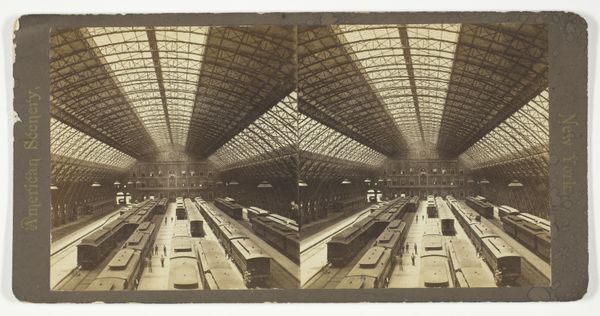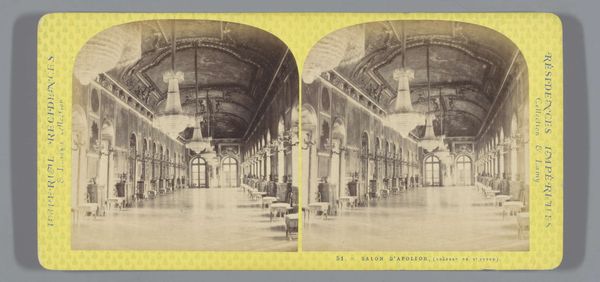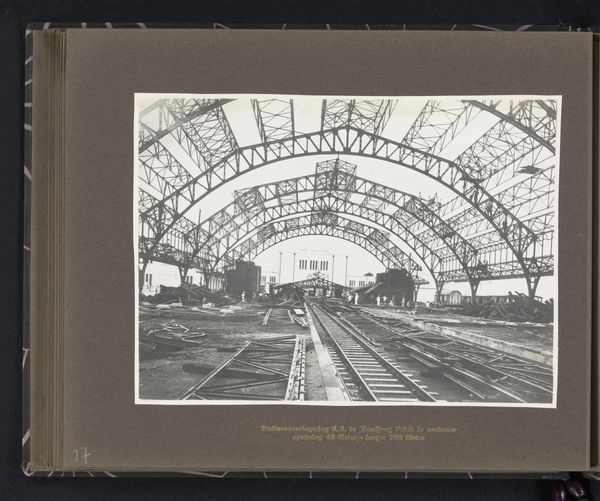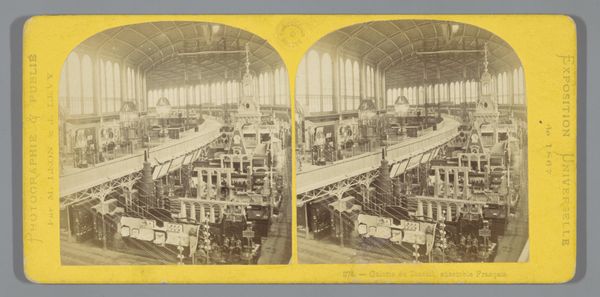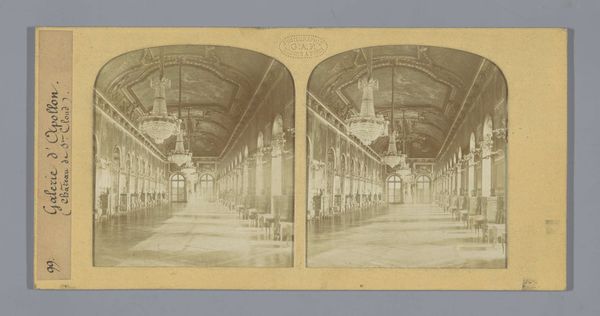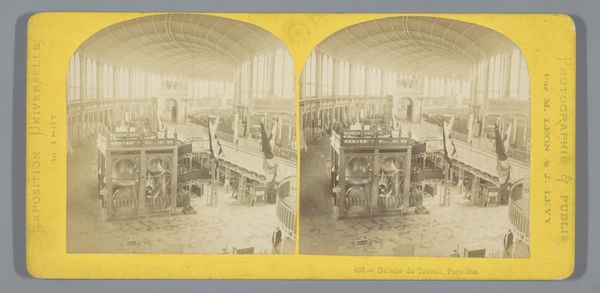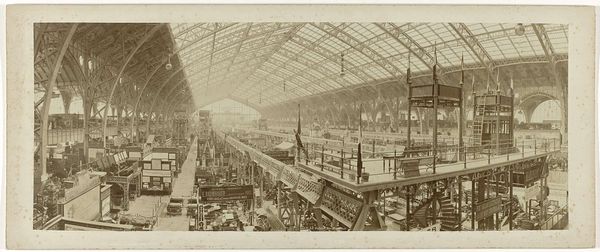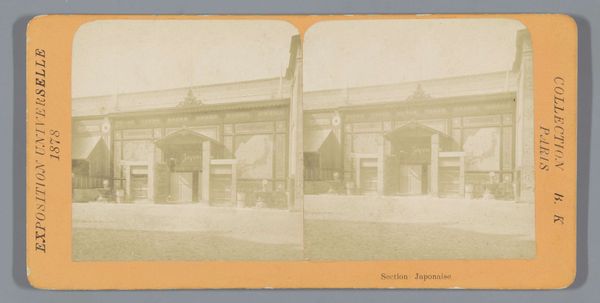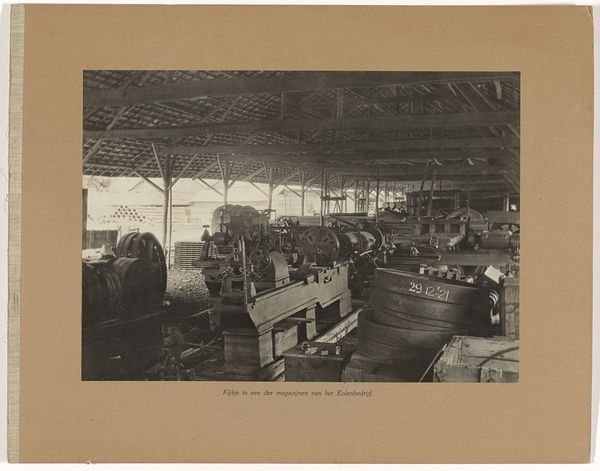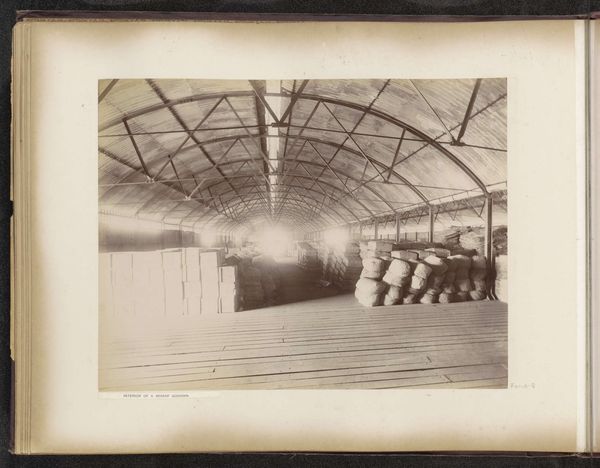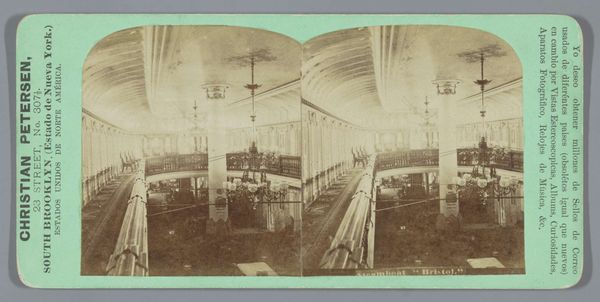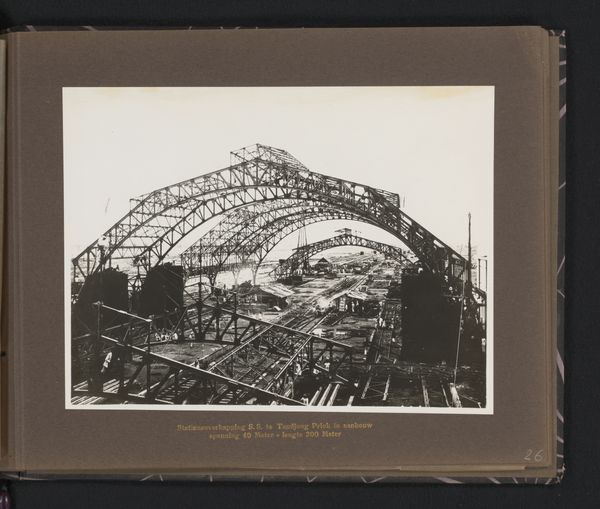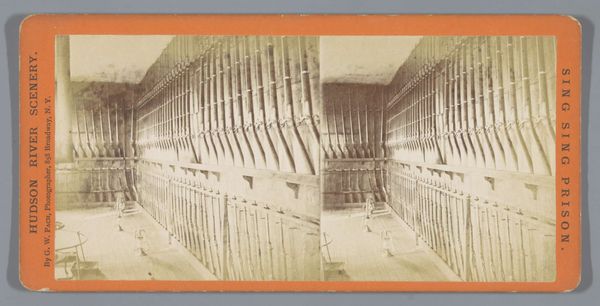
print, photography
# print
#
photography
#
coloured pencil
Dimensions: height 87 mm, width 179 mm
Copyright: Rijks Museum: Open Domain
Jules Hippolyte Quéval created this stereograph of the Machine Hall at the 1889 World’s Fair using photography. The image gives us a view into the spectacle of industrial progress celebrated at these events. Here, the composition focuses on the scale of the machinery and the building that houses it, emphasizing technological advancement. This was France, and world fairs were designed to showcase national achievements while promoting international exchange. The Machine Hall itself was an architectural marvel, a vast, iron-and-glass structure symbolizing industrial might. What’s interesting is that world fairs can be seen as instruments of soft power and cultural diplomacy, shaping national identities and solidifying a sense of shared modernity. They also provided a stage for social commentary, with debates raging about labor conditions, consumerism, and the environmental impact of industrialization. To fully understand the photograph’s place in history, we might turn to exhibition catalogs, contemporary press accounts, and architectural studies. This helps us better understand the relationship between art, technology, and society.
Comments
No comments
Be the first to comment and join the conversation on the ultimate creative platform.
